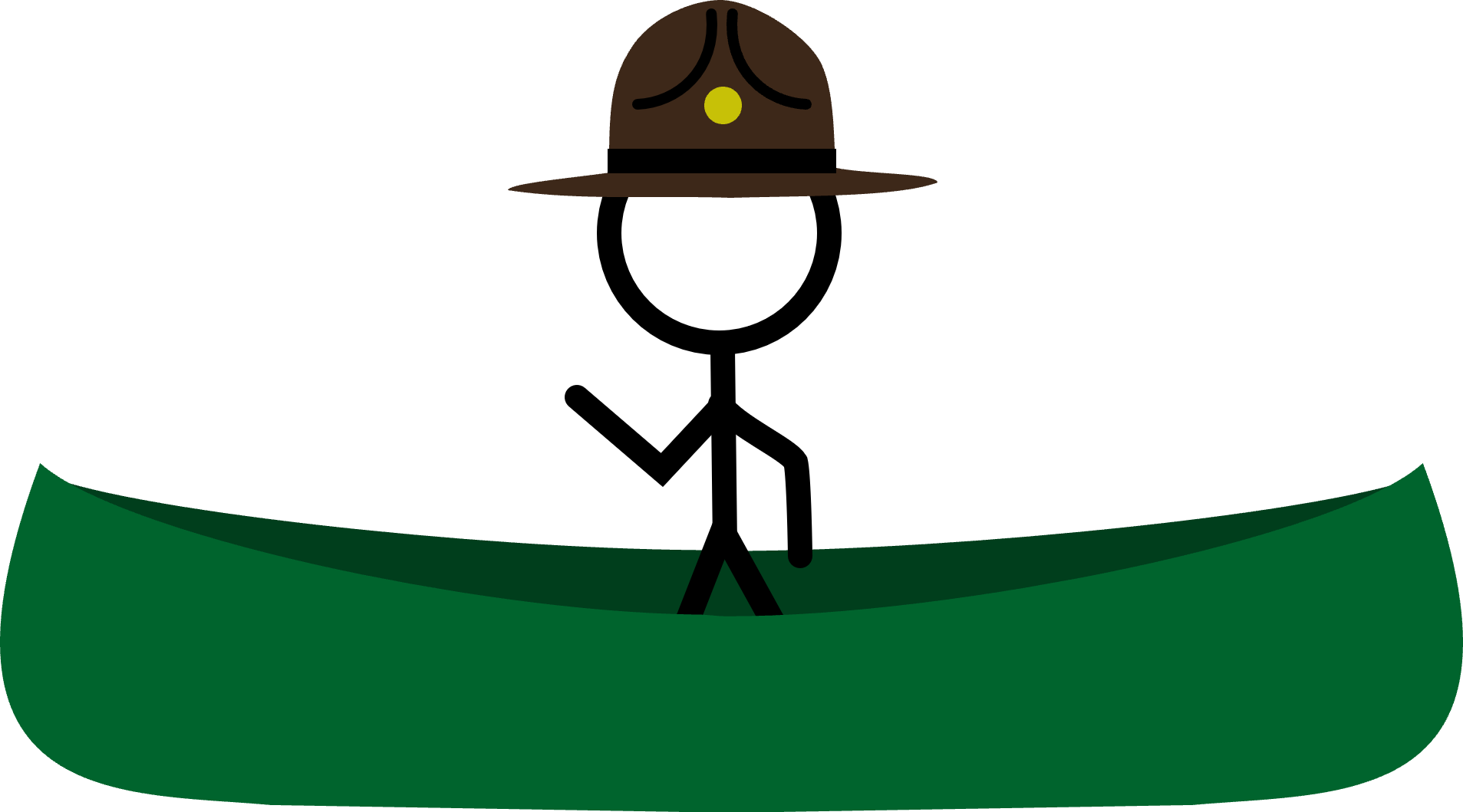
If you want to get anywhere, you'll need to learn a few basic strokes.
To tandem canoe, you'll need good communication, teamwork and a basic knowledge of canoe strokes. Without these, you may find yourself going in circles or needing to find a new partner.
Here are some basic canoe strokes:
Forward Stroke is used to propel the canoe forward.
The Backstroke is used to propel the canoe backwards.
Sweeps are used to turn the canoe.
The Front Sweep propels the canoe forwards and turns the canoe in the opposite direction of the side you are paddling on.
The Back Sweep slows the canoe (or moves it backwards) and turns the bow of the canoe to the side you are paddling on.
Sweeps can be used together to turn or spin the canoe.
Pushaway (Pry) is used to push the side of the canoe away from the direction you are paddling
The Draw is used to pull the canoe towards the direction you are paddling.
Used together, the Pushaway and Draw can be used to move the canoe sideways, diagonally or in a pivot.
As you paddle on one side of the canoe, the canoe will turn towards the opposite side you are paddling on. If both paddlers paddle on the right side of the canoe, the canoe will turn to the left. If paddlers paddle from alternate sides of the canoe, they tend to counter each other to some extent and the canoe will travel in a straighter line, but not perfectly straight line. Some of this is due to the difference in strength of the two paddlers. But more importantly, most canoes are set up so that the stern (back) paddler is closer to the back end of the canoe than the bow (front) paddler is to the front of the canoe. Because of this, the stern paddler's strokes will have a greater effect on the direction of travel of the canoe.
For ease of travel, the Stern Paddler is usually responsible for steering of the canoe. The Bow Paddler is responsible for propelling the canoe.
Since a Forward Stroke will generally turn the canoe in the opposite direction of the stern paddler, several correctional strokes can be used to help keep the canoe going in a straight line.
The J-Stroke is will help offset the Stern Paddler's Forward Stroke. Start with a Forward Stroke and finish by curving your paddle away in a "J" shape. The thumb on the grip will point downwards during this stroke.
The Rudder Stroke will move the canoe a little more, but will also slow canoe a little, especially if held for too long. The thumb turns upwards with the rudder stroke.
The Stern Pry is performed by starting with a Forward Stroke and ending with a quick pry. This quick pry shoves the stern in the opposite direction you are paddling on, therefore turning the front to the side you are paddling on. Avoid holding the pry as this will slow the canoe.
Stern Paddler paddling on the RIGHT SIDE:
Stern Paddler paddling on the LEFT SIDE:
Solo canoeing is great but has a few drawbacks over tandem canoeing. For one, you lose the power strokes of the Bow Paddler. You also can't blame the other paddler for paddling in a circle or zig-zag.
For starters, there are several position options for solo canoeing.
Middle Position - Usually, a solo canoeist will sit in the middle of the canoe, a little towards the stern to trim (balance front and back) the canoe.
Reversing Canoe - Symmetrical canoes can often be flipped around so that the stern faces forward. If a solo canoeist sits in the bow seat, they are closer to the center.
Loaded Canoe - If a canoe is ballasted with gear or an non-paddling person in the front, a solo canoeist can paddle from the stern.
Solo Canoes - Many canoes are set up for solo canoeists.
Like tandem canoeing, a solo canoeist has all the same strokes. Since a second paddler isn't there to counter your strokes, your strokes have a greater influence on tracking and turning of your canoe.
https://www.youtube.com/watch?v=dA-YWAeLkIM
Novice paddlers have a tendency to ZigZag or even paddle in circles. This is usually due to lack of knowledge of correctional strokes or how to properly use them. ZigZagging results in excessive expenditure of energy and time to get to your destination. On the bright side, it is good of laughs.
For tandem paddlers, the stern paddler should pick a target in the distance. As the canoe veers from one direction to anther, make corrections. It is better to make smaller correction early than to wait and have to make bigger corrections.
Solo paddling is similar to tandem paddling. Aim your bow at a distant target. Make frequent corrections. Over time, this become automatic.
Once you are comfortable with the basic canoeing strokes, you can add others to your paddling repertoire.